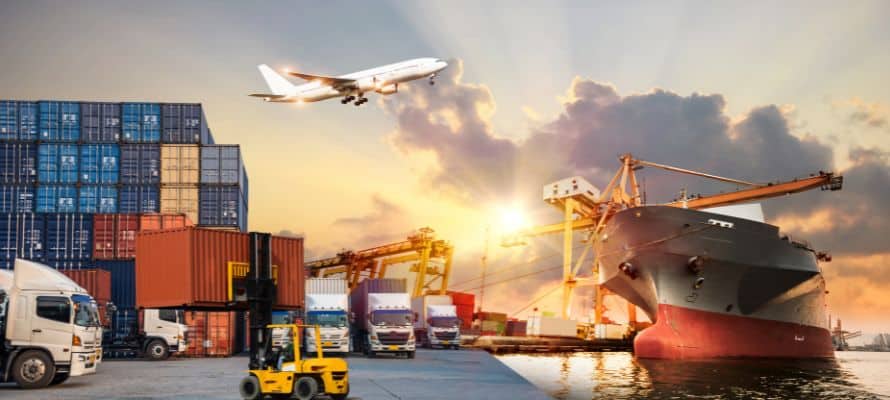
From labor disputes to the rise of smarter data for logistics companies, there’s a lot to keep up with in the transportation industry. As you look ahead, these logistics industry trends will help you create the right labor management and internal communication strategies to effectively engage and retain your distributed workforce.
In logistics and transportation, there are always a few topics top of mind: safety, labor relations, employee engagement, and retention.
But there’s also a big rise in the use of modern technology for data analysis and employee communications to create more efficiencies and cost savings.
So, let’s dive into how things are moving in the industry and how you can prepare for the year ahead.
Retention is a particularly big challenge for logistics, and it’s only getting worse. The Bureau of Labor Statistics is reporting that the number of people voluntarily leaving their jobs in this industry is increasing. This is creating a perfect storm in the industry as the pandemic sparked an e-commerce boom that hasn’t really slowed.
Here are some of the top reasons why:
As we mentioned already, safety is a huge issue for the logistics industry. Truckers, warehouse workers, and material movers face safety risks every day, making the continuity of a Safety Culture absolutely critical.
In 2020, there were 846 fatalities in the logistics sector.
And as churn increases with demand, this only creates more dangerous situations for your workers.
Overtime, this can not only increase risk of physical injury, but can also have serious mental health implications.
Employee engagement is naturally not very good when retention is low and stress is up. Even employees who are able to chase higher pay by hopping around, might not feel the same wage-related burden, but they don’t have the same level of security and consistency that benefits mental wellbeing.
This makes it critical for companies to figure out their employee value proposition ASAP.
[optin-monster slug=”dxuizaiod5b8koqc3jgx-2″ followrules=”true”]
The internal communications tools we provide to logistics workers have to evolve. If we want to keep our employees safe during a crisis or even during daily operations, they have to have the right communication technology.
Companies investing in Bring Your Own Device (BYOD) policies will have a competitive advantage over those who rely on old-school internal comms channels and strategies.
Labor Relations in Logistics
With all the tensions in the industry, it’s no surprise that there is legislation and numerous bills being considered in the United States.
Although legislation like the Protecting the Right to Organize Act (PRO Act) did not have unanimous approval from truck drivers—who would have lost their ability to be classified as independent contractors and seek the best pay—it does show that things are changing in the industry. That things should change, even if the solutions aren’t straightforward.
As we move forward into 2024, consider that although logistics workers typically haven’t unionized, labor relations and how you combat your labor shortage, safety issues, and harsh working conditions is going to make all the difference.
As you can see, the logistics industry trends we’re facing right now don’t have an easy fix. But there are many things we can do as communications and HR professionals to address these challenges.
To help support your strategies for addressing the latest logistics industry trends, you’ll need to consider your communications tech stack. Conducting an audit of your communications channels is a great place to start to uncover the barriers to successful communication.
For example, BNSF Logistics used a mobile employee app and technology to connect their workers and improve the employee experience.
If you’re interested in learning more about theEMPLOYEEapp and how we might be able to help you reach, engage, and retain your employees, please request a demo today.
[optin-monster slug=”gqorn0natkqgyrtjvr6i” followrules=”true”]